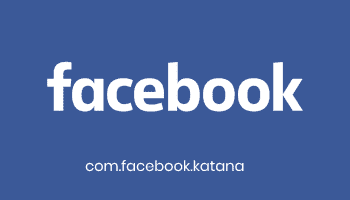The world of blockchain technology is continuously evolving, and cross-chain compatibility has emerged as a crucial aspect. In this article, we delve into the cross-chain compatibility of TRON, a prominent blockchain platform known for its innovative features and growing ecosystem.
Let’s not overlook the platforms that have contributed to the widespread adoption of cryptocurrencies. Profit Edge is a reliable online trading platform when you are looking for a trusted app for trading.
What Is Tron?
Tron is a decentralized blockchain-based system that is powered by a smart contract function. It follows a proof of stake principles as the consensus algorithm.
It has its own digital currency called the Tronix or TRX. The users of the TRX can pay directly to the content creators so that they can have access.
It is founded in the year 2017 by a Singaporean organization. Tron aims to host a global entertainment system by sharing digital content. Therefore it can be identified that the system bears a great deal of advantages.
Tron uses features like Blockchain technology and peer-to-peer to eliminate the presence of middlemen. At the same time, it allows the content creatures to interact with the customers and the potential customer directly.
Tron’s Potential
The Tron was created as a direct challenge to the media industry. With the slogan of decentralization, it aims to nullify the presence of corporate middlemen in the media. Looking at the efficacy and future growth of this content, people would love to integrate themselves with the system to reap the benefits.
TRON’s Cross-Chain Initiatives
One of TRON’s key approaches to achieving cross-chain compatibility is through strategic partnerships. TRON has collaborated with various blockchain projects and organizations that share the vision of cross-chain interoperability. These partnerships aim to establish bridges between TRON and other blockchain networks, allowing for the seamless transfer of assets and data across different platforms.
These cross-chain initiatives by TRON have demonstrated successful transactions and collaborations with other blockchain networks. Through these partnerships, TRON has proven its commitment to creating a robust cross-chain ecosystem, enabling users to seamlessly interact with multiple blockchain platforms and tap into a broader range of functionalities.
Facilitating Cross-Chain Compatibility
Furthermore, TRON has invested in the development of its cross-chain infrastructure and architecture. The platform has been actively working on building a reliable and efficient framework to facilitate cross-chain transactions. By creating a solid foundation for cross-chain compatibility, TRON aims to overcome technical challenges and ensure secure and smooth asset transfers between different blockchain networks.
TRON’s adherence to TRC (TRON Request for Comments) standards also plays a crucial role in enabling cross-chain compatibility. These standards ensure that TRON-based assets can be seamlessly transferred and used across various blockchain networks, enhancing liquidity and usability for TRON users.
Technical Aspects Of TRON’s Cross-Chain Compatibility
TRON’s cross-chain compatibility relies on several technical aspects that enable seamless communication and interoperability with other blockchain networks. By understanding these technical components, we can gain insights into how TRON achieves cross-chain compatibility and facilitates smooth asset transfers.
Efficient Transfer Of Assets
At the core of TRON’s cross-chain compatibility is its cross-chain infrastructure and architecture. TRON has developed a robust framework that allows for the secure and efficient transfer of assets between different blockchain networks. This infrastructure includes components such as cross-chain bridges, validators, and relay protocols, which facilitate the seamless exchange of assets and data.
Central to TRON’s cross-chain compatibility is the utilization of TRC (TRON Request for Comments) standards. TRC standards provide a set of rules and guidelines that ensure interoperability between TRON and other blockchain networks. By adhering to these standards, TRON ensures that assets and smart contracts can be effectively transferred and utilized across different platforms, enhancing liquidity and usability.
Integration Of Key Protocols And Technologies
Another critical aspect of TRON’s cross-chain compatibility is the integration of key protocols and technologies. TRON leverages various protocols such as atomic swaps, multi-signature wallets, and Oracle systems to enable secure and trustless cross-chain transactions.
Additionally, it places emphasis on interoperability not only at the asset level but also at the data level. Through the use of cross-chain oracle systems and data interoperability protocols, TRON enables the exchange of data and information between different blockchain networks. This capability opens up possibilities for cross-chain smart contracts and decentralized applications that can utilize data from multiple sources.
Future Prospects And Implications
TRON’s pursuit of cross-chain compatibility holds significant promise for the future of the crypto ecosystem. As it continues to enhance its cross-chain capabilities, several prospects and implications emerge, shaping the landscape of blockchain interoperability.
One of the key future prospects is the expansion of TRON’s reach and connectivity. By establishing bridges with other blockchain networks, TRON can tap into a broader user base and ecosystem. This expansion opens up new opportunities for collaboration, innovation, and the seamless transfer of assets between different platforms.
Furthermore, TRON’s efforts in cross-chain compatibility can contribute to increased liquidity and usability of TRON-based assets.
Interconnectedness And Collaboration
By enabling seamless transfers across different blockchain networks, TRON holders can access a wider range of decentralized applications, smart contracts, and financial services. This enhanced accessibility enhances the utility and value of TRON tokens, fostering greater adoption and engagement within the crypto community.
The implications of TRON’s cross-chain compatibility extend beyond the immediate benefits to its network. The advancement of cross-chain interoperability by it sets a precedent for other blockchain platforms to follow suit. As more projects recognize the importance of interconnectedness and collaboration, the overall blockchain ecosystem can evolve toward a more integrated and efficient infrastructure.
However, challenges and obstacles lie ahead for TRON’s cross-chain expansion. Technical complexities, interoperability standards, and regulatory considerations are among the factors that need to be addressed.
Conclusion
TRON’s cross-chain compatibility initiatives showcase its commitment to building an interconnected blockchain ecosystem.
Through strategic partnerships, the development of cross-chain infrastructure, adherence to TRC standards, and integration of key protocols, TRON has made significant strides in achieving seamless asset transfers and data exchange between different blockchain networks.
The future prospects of TRON’s cross-chain compatibility point to expanded connectivity, increased liquidity, and much more. Hence it is safe to say that Tron is the near future and a step closer to next-level digitization.
Additional:




























